I was scheduled to do a 10k trail race last Saturday. Mother Nature had other plans. The snow that we got earlier in the week made the race director nervous. He polled the runners by email two days before the race: run on the trail in the snow, or switch to the plowed roads? I voted for trails. I love running in the snow.
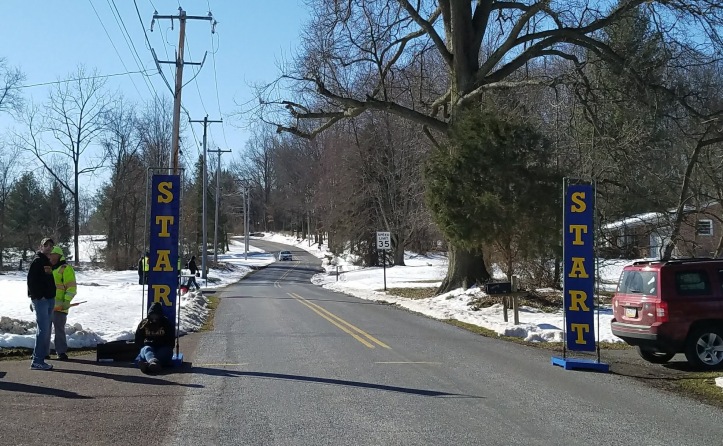
I was in the minority. We ran on the road. It was still a fantastic race!

While I was running the race, the March For Our Lives was taking place in Washington, DC with over 850,000 protesters, many of them students, demonstrating for common sense gun legislation. Around the country and the world, millions more marched and demonstrated.
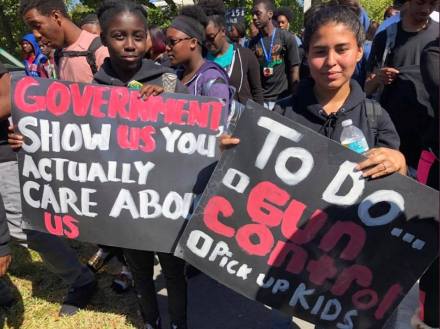
Some of the demonstrators looked too young to be aware of gun violence, but they were about the same age as the 20 first graders massacred at Sandy Hook elementary school in 2012.
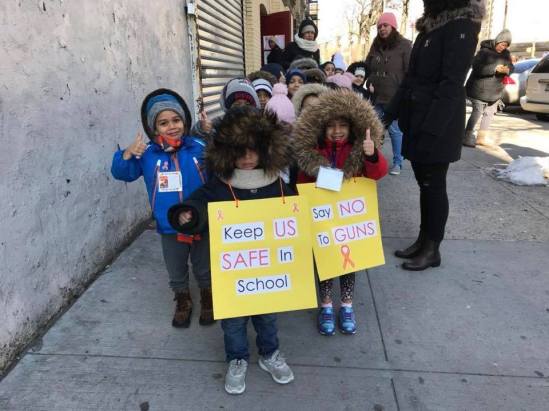
No matter what your views are on gun control, you must admit this: these are children asking us, the adults, to keep them safe. In school. This they deserve. It is our responsibility.
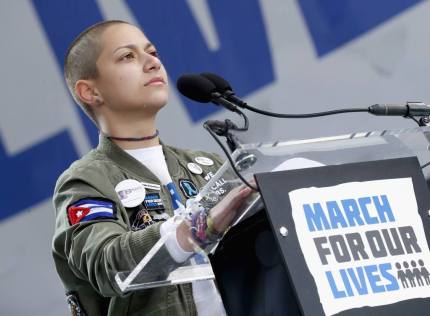
The students who spoke were respectful, eloquent and passionate. Isn’t that what we want from our young people? They are doing what we should be teaching them to do – advocate for themselves.
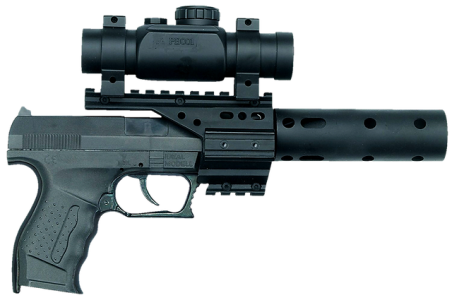
When talking about guns, it is easy to become embroiled in a no-win, emotional debate which is sometimes presented as an all-or-nothing situation. Gun rights advocates decry any attempt to regulate firearms. Some gun control advocates want the private ownership of guns abolished as it is in some European nations. This is a false choice, a sham. It’s not strictly an either-or situation. My training and background is in science, so I tend to look at situations as a scientist does – as a problem to be solved. Looking at the history of car safety in the US can be instructive.

In 1966 over 50,000 people died in car crashes in the United States. By the standards of today, cars were not safe. Most did not have seat belts. None had air bags or collapsible steering wheel columns. The year before, a young lawyer named Ralph Nadar had published a book called Unsafe at Any Speed, an indictment of car manufacturers who failed to introduce safety features that were shown to reduce injuries and fatalities in car accidents. The book became a best seller. At first, car manufacturers resisted adding safety features. Instead, they mounted a smear campaign against Nadar and hired investigators to dig up dirt on him. The dirty fighting tactics backfired, however, and the president of General Motors was forced to appear before a U.S. Senate committee and apologize to Nadar. President Johnson signed two auto safety bills into law and formed the National Traffic Safety Agency by the end of the year. Prior to the publication of the book, popular sentiment blamed the driver of the car for injuries and fatalities when accidents occurred (Cars don’t kill people, people kill people). The book caused a shift in public sentiment.

Nadar did not discover these deficiencies in cars, he reported them. Research into car safety had been ongoing for the previous 50 years. Car manufacturers simply did not want to implement the safety measures that would save lives. Safety devices made automobiles less stylish, more expensive, and placed unwanted restrictions on the manufacturers. A complete change in philosophy regarding automobile safety engineering has taken place in the 50 years since Nadar’s book was published. Now automotive engineers employed by all major car manufacturers study crash test videos and look at data collected by the National Highway Traffic Safety Administration on a routine basis to determine how cars can be made safer. This approach has saved lives. Even though the number of passenger miles had tripled since the 1960s, the number of automobile fatalities has declined by over 30%.

Today, the number of gun fatalities is approximately equal to automobile fatalities each year. Almost 2/3 of gun fatalities are due to suicide. Stephen Teret is the director of the Johns Hopkins Center for Law and the Public’s Health. He has been studying ways to make guns safer for over 40 years. Radio Frequency Identification (RFID), which Teret believes would reduce teen suicides and accidental shootings, is a technology that will prevent a gun from firing unless it is close to a device broadcasting a specific radio frequency. Biometric smart guns will only fire when the user’s body characteristics, such as fingerprints, are recognized. This makes the gun useless if stolen. It cannot be fired by a child who finds it unlocked or an assailant who wrests it away from the owner. Guns that can be remotely disabled in places like schools and airports have been tested. These are all potential solutions to the gun safety issue that can be done without restricting access to guns or infringing on Second Amendment rights using technology that is currently available.
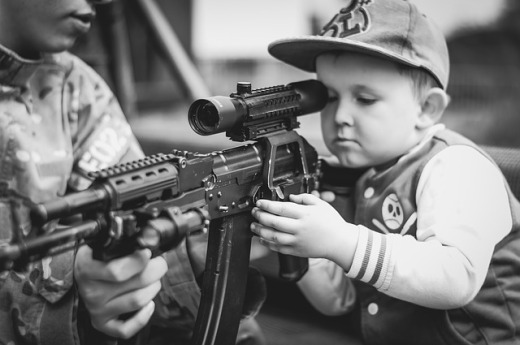
The NRA opposes smart gun technology for the same reason that General Motors opposed seat belts. They don’t want to be regulated. They don’t want to be told that smart gun technology must be included on every gun sold in the United States. It may seem like the NRA has an unassailable hold over legislators due to massive political contributions (interesting personal story to follow), but the NRA is on the wrong side of history. Regulations were eventually put into place to make cars safer. The same will happen with guns. Maybe the March For Our Lives is the gun debate’s Unsafe at Any Speed moment. Maybe the shift in public sentiment is now occurring. For the sake of students who are marching to save lives, and for others, whose lives have been shattered by gun violence, I hope so.

Interesting personal story: I live in a very conservative county. Our freshman U.S. Congressman Lloyd Smucker is, unsurprisingly, a very conservative Republican. I don’t always agree with him, but I did respect him until two weeks ago. After the Parkland school shooting, when criticism of the NRA was high, he wrote an op-ed in our local paper about the NRA’s support of politicians. In it, he wrote “The NRA contributed just over $1 million to candidates in the 2016 campaign cycle (ranked 489th in organizations contributing to campaigns).” His point was, the NRA’s influence is overstated. You should know that Rep. Smucker has received over $220,000 of support from the NRA, more than any other congressional candidate in 2016. His statements didn’t seem plausible to me, so I did a little research. What he wrote was technically true, but disingenuous. You see, the NRA does not make the majority of its donations directly to political campaigns; rather, it spends most of its money to buy advertising for candidates it supports. The total NRA expenditures in the 2016 election cycle were $419 million (not $1 million). When you look at total campaign spending (not just money directly donated to a candidate), no outside group outspent the National Rifle Association to elect President Donald Trump in 2016. They were No. 1 (not number 489), spending even more than Trump’s super PAC. Most of the expenditures came in the form of TV and radio ads – not campaign contributions. Why the dissembling by our congressman? He knew that the information that he presented was misleading. I wrote a letter to the editor presenting the results of my research. I no longer think of my congressman as a man of integrity. He was trying to deceive his constituents.

Maybe the hope for decreasing the number of deaths due to guns in this country can be provided by science and technology. In the words of Stephen Teret, “it is easier to design a product to be safer than it is to change the behaviors of 300 million people so that they act prudently with a gun.” We can take our clue from the changes in automotive design over the past 50 years. Fatalities due to automobile crashes decreased because we made cars safer, not because we made people better drivers. We must do the same with guns.
Great analogy to car safety!
LikeLiked by 1 person
Thank you, Shari!
LikeLike
This is an excellent and unbiased post about one of the most difficult and polarizing issues that we are facing today. Thanks for taking the time to write it!
LikeLiked by 1 person
Thank you so much. I started writing a completely different post and scrapped it, because I knew I wanted to say something about this.
LikeLike
This post is fantastic! It should be shared across the country. And yes, the car safety analogy was brilliant!
LikeLiked by 1 person
Thank you so much! It’s something I think about a lot!
LikeLiked by 2 people
I think this is an outstanding analysis and a very common sense approach. I love the idea of kids not being able to fire a gun because it’s not “tuned” to their biometrics. It breaks my heart every time I read about a child killing a sibling or friend. Amen to better gun safety.
LikeLiked by 1 person
Thank you, Peg. Written like a true scientist (or engineer!) During my second year of teaching, a middle school student of mine shot himself to death by accident while showing friends his father’s gun. It is a heartbreaking story that still haunts me!
LikeLiked by 1 person